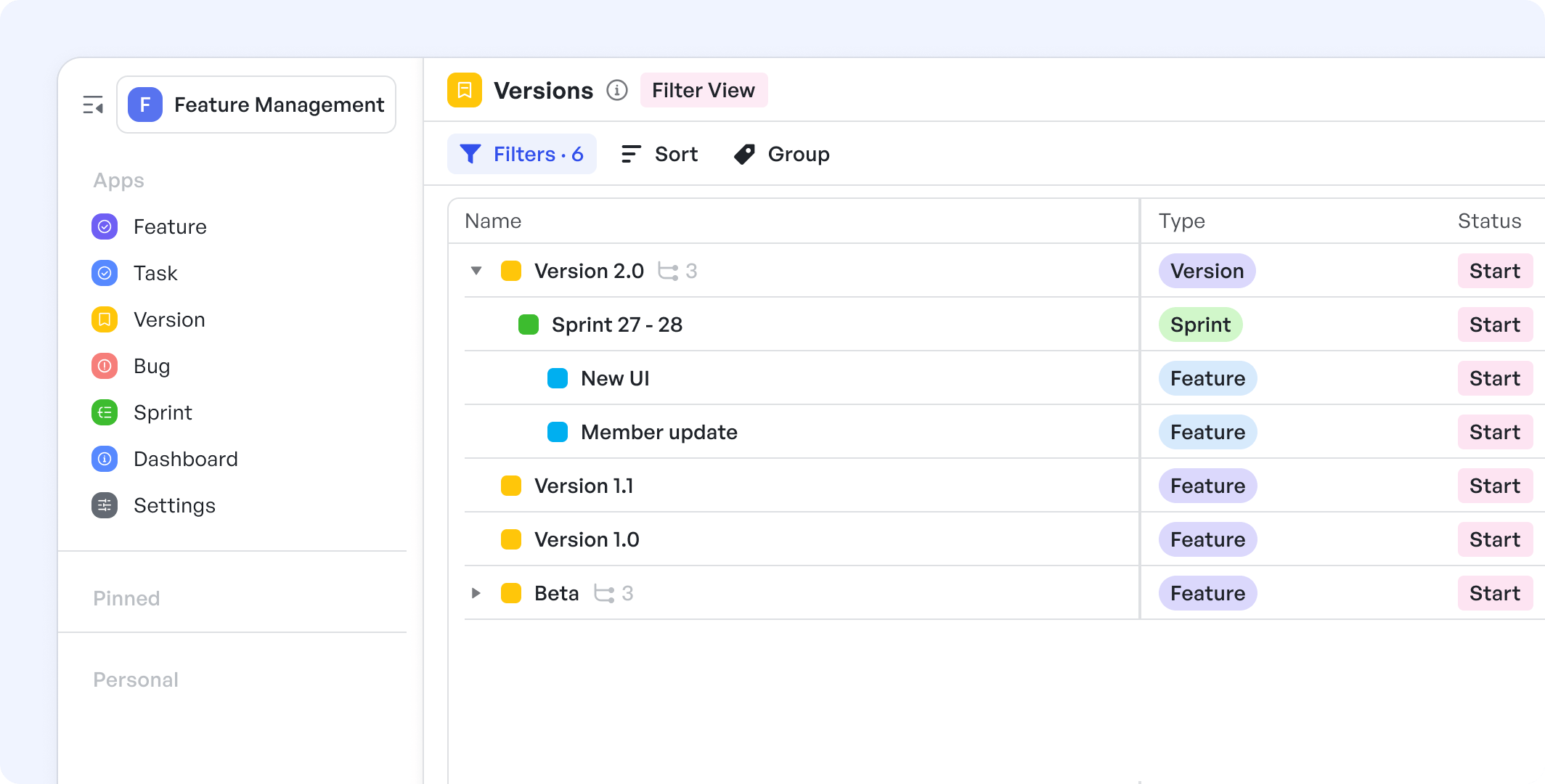Meegle's Feature Management Template empowers teams to streamline the entire feature development lifecycle, from ideation to delivery. Designed for agile development teams, R&D departments, and project managers, this template offers a comprehensive solution to visualize and orchestrate the feature development cycle, fostering seamless collaboration and efficient progress tracking.
Key Benefits:
- Visualize the complete feature development cycle for better planning and execution
- Streamline collaboration across teams and stakeholders
- Monitor progress with real-time insights and analytics
- Automate routine tasks for enhanced productivity
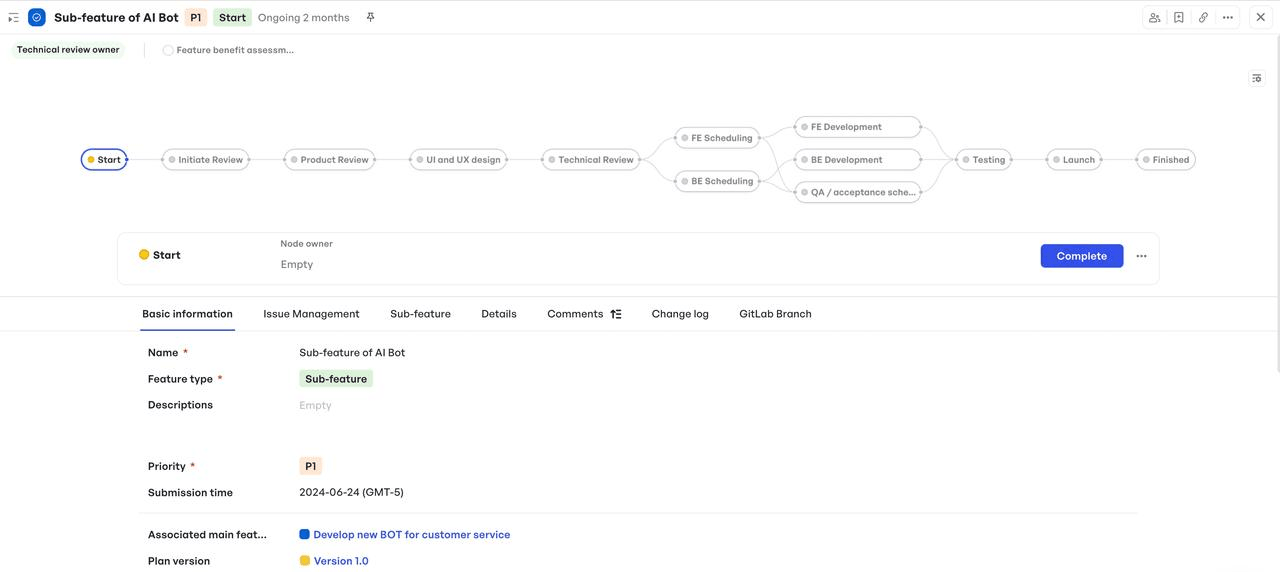
250px|700px|reset

Key Features of the Feature Management Template
Meegle Work Items
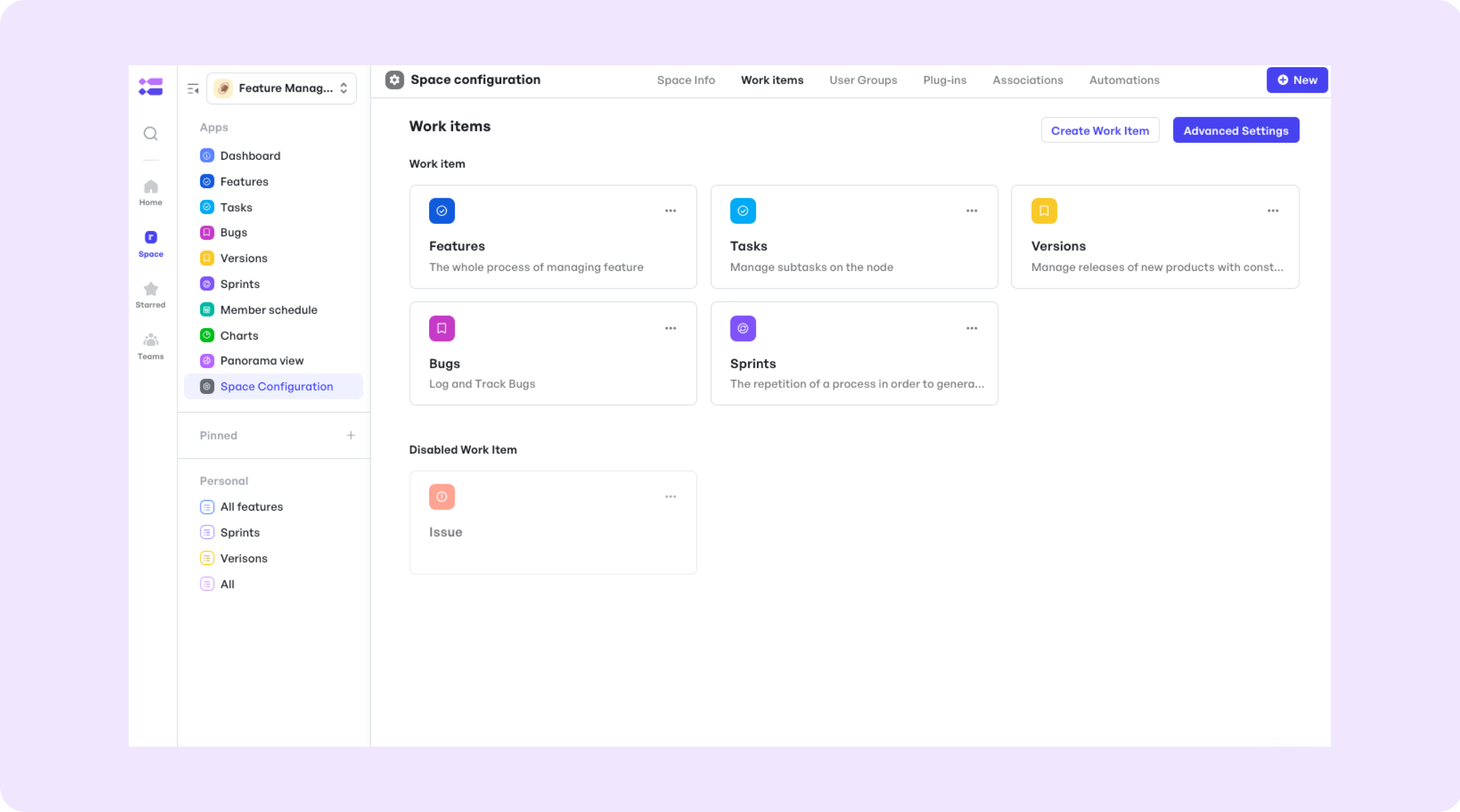
250px|700px|reset
- Feature Management: Managing all business and technical features in customized workflows.
- Sprint Management: Utilizing Meegle to clarify the next steps for a sprint, including adding new modules/sections and optimizing specific features and pages.
- Version Management: A version can be released for one or multiple sprints, and a single sprint can have multiple versions. By associating versions with features and bugs, periodic deliveries to users can be achieved.
- Bug Management: Bug management primarily records implemented product functionality bugs, etc. It can achieve bug-feature association, bug-sprint association, and manage the progress of product functionality bug fixes.
Feature Prioritization
Assign priorities to product features based on business impact, customer value, and feasibility.
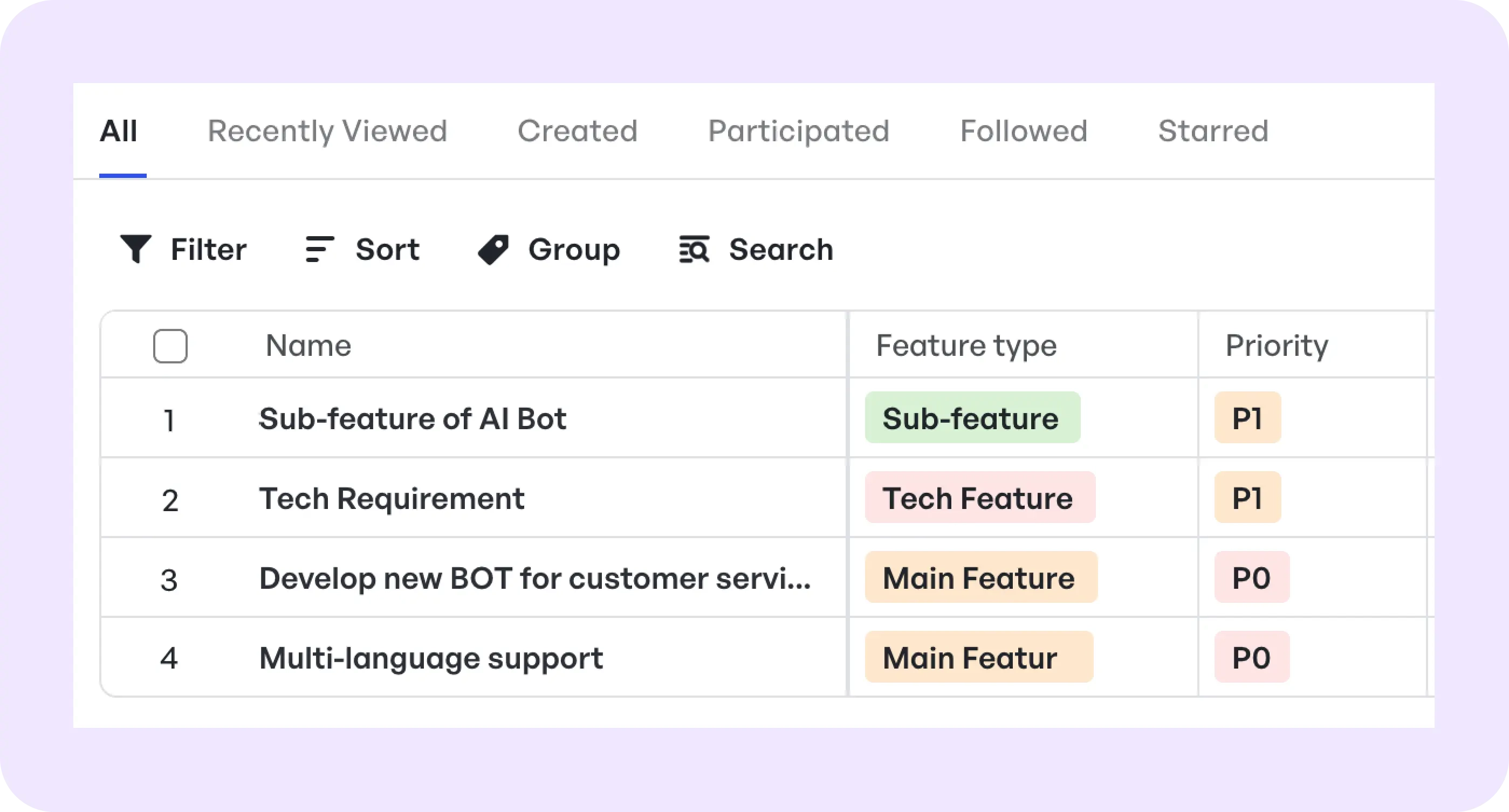
250px|700px|reset
Cross-Team Collaboration
Facilitate seamless communication between product, design, and development teams.

250px|700px|reset
Task Tracking and Progress Monitoring
Monitor the progress of each feature and ensure tasks are completed on schedule.

250px|700px|reset
Project Hierarchy
Organize and structure your projects, features, and tasks for better oversight and management.
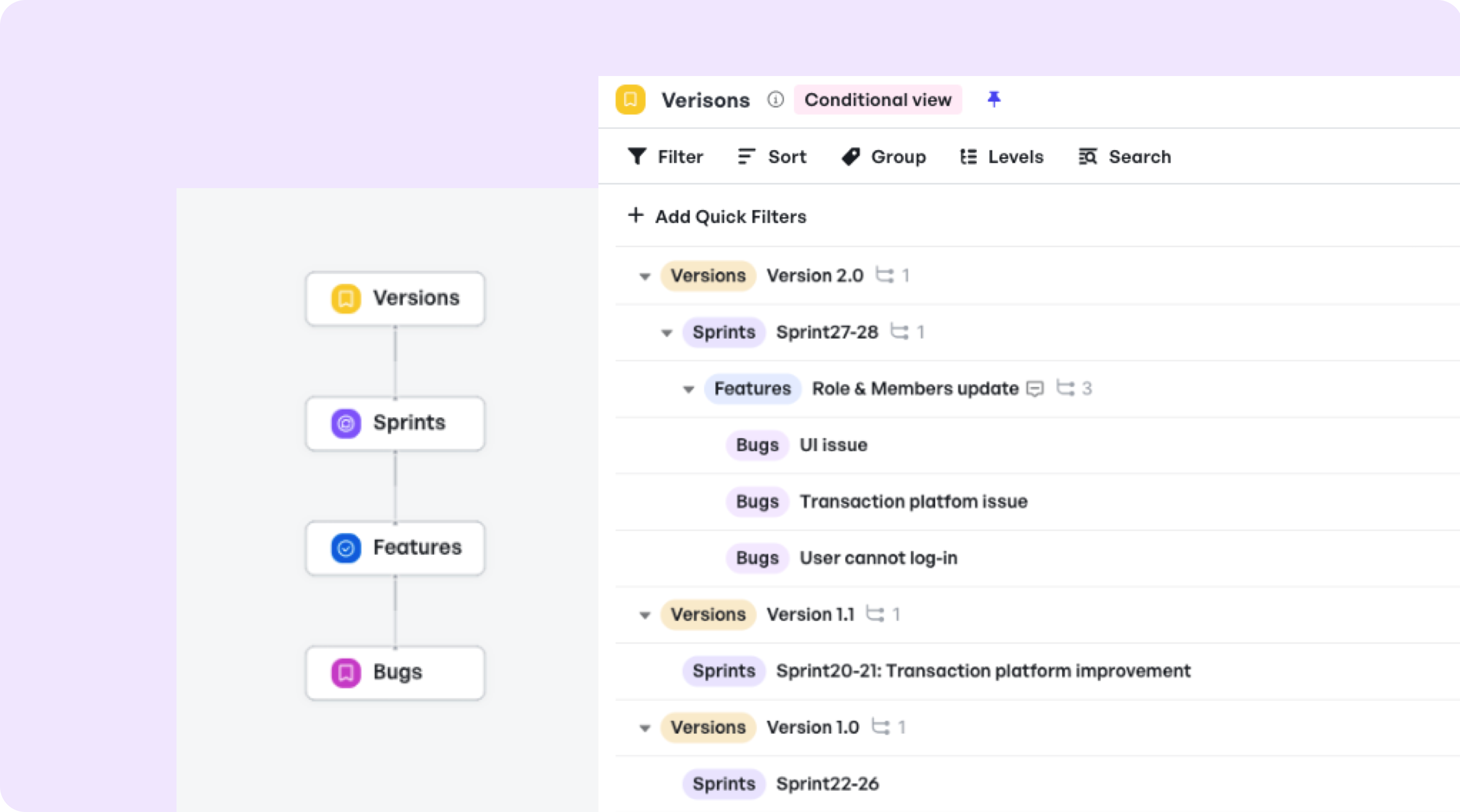
250px|700px|reset
Automation
Automation in Meegle is a powerful feature designed to enhance productivity and reduce manual labor by automating routine tasks in project management. It allows space administrators to configure specific rules that can trigger actions based on certain conditions and scenarios.
Meegle's automation revolves around three key elements:
- Trigger: This specifies when automation should occur. For example, you can set a trigger for when a new task is created within a project.
- Condition: These are the filtering conditions that need to be met for the action to be executed. For instance, a condition might be that a task has a certain label or is assigned to a specific team member.
- Operation: This refers to the action that will be executed once the trigger and conditions have been met. An operation could be sending a notification, updating a task status, or creating a new task.
Examples of Automation Triggers:
Here are some scenario-based triggers that you can configure in Meegle’s automation rules:
- Trigger when a requirement is created
- Trigger when a task status changes to 'Done'
- Trigger when an issue is updated with a specific tag

250px|700px|reset
Getting Started:
- Workflow set-up
- Workflow set-up
Leverage Meegle's pre-configured feature development workflow or customize it according to your team's specific needs. Follow our dedicated guide for workflow configuration:
Follow the steps outlined in our dedicated guide:
- Submit feature tickets
- Submit feature tickets
Initiate the development process by submitting clear and detailed feature tickets, outlining requirements, specifications, and expected outcomes.
- Assign members/node owners
- Assign members/node owners
Collaborate effectively by assigning team members to appropriate workflow nodes and designating node owners to oversee each development phase.
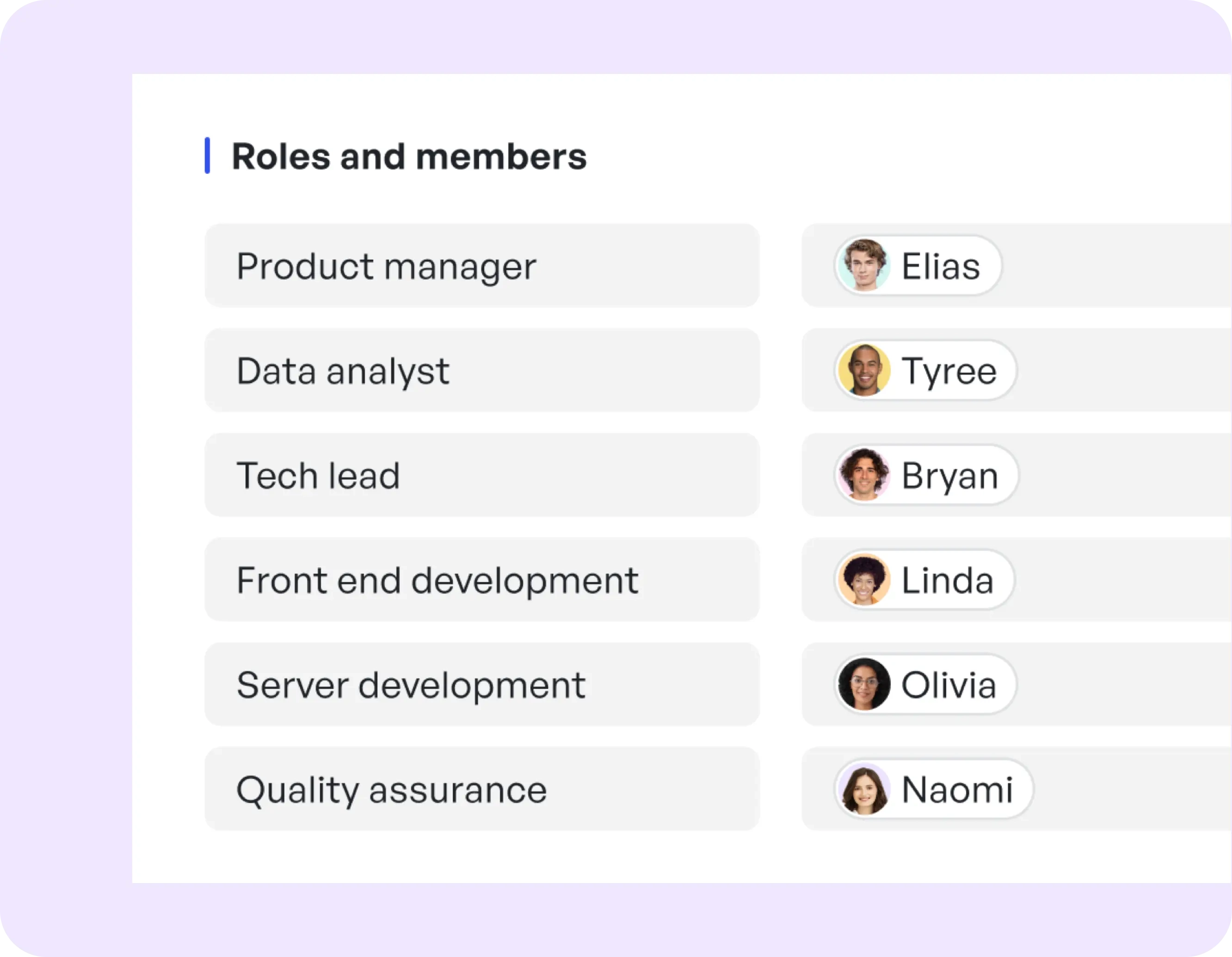
250px|700px|reset
- Bug tracking
- Bug tracking
Promptly submit bug tickets during the development and testing phases, providing detailed information, priority levels, linked features, and relevant attachments.
- Resource Allocation
- Resource Allocation
Utilize Meegle's intuitive dashboards and reporting features to monitor progress, identify bottlenecks, and ensure timely delivery. Leverage continuous data analysis and measurement tools for informed decision-making:
- Adjust team members' bandwidth
- Adjust team members' bandwidth
Optimize team bandwidth by adjusting member schedules and workloads through Meegle's dedicated resource management view:
Explore Advanced Capabilities:
- Action Control:
- Action Control:
Ensure efficient communication within the team through three quick operations.
- Comment:
- Comment:
read the latest comment without opening a ticket

250px|700px|reset
- Create and join a group:
- Create and join a group:
Create a group chat for related members or join the group chat and understand the context by reading chatting records.
- Follow:
- Follow:
Click the button and become a follower automatically. Followers can track feature development progress through the bot & My Workspace.
- Third-party Integration:
- Third-party Integration:
Unleash the full potential of feature development with Meegle's comprehensive Feature Management Template, designed to empower teams, foster collaboration, and drive successful product delivery.
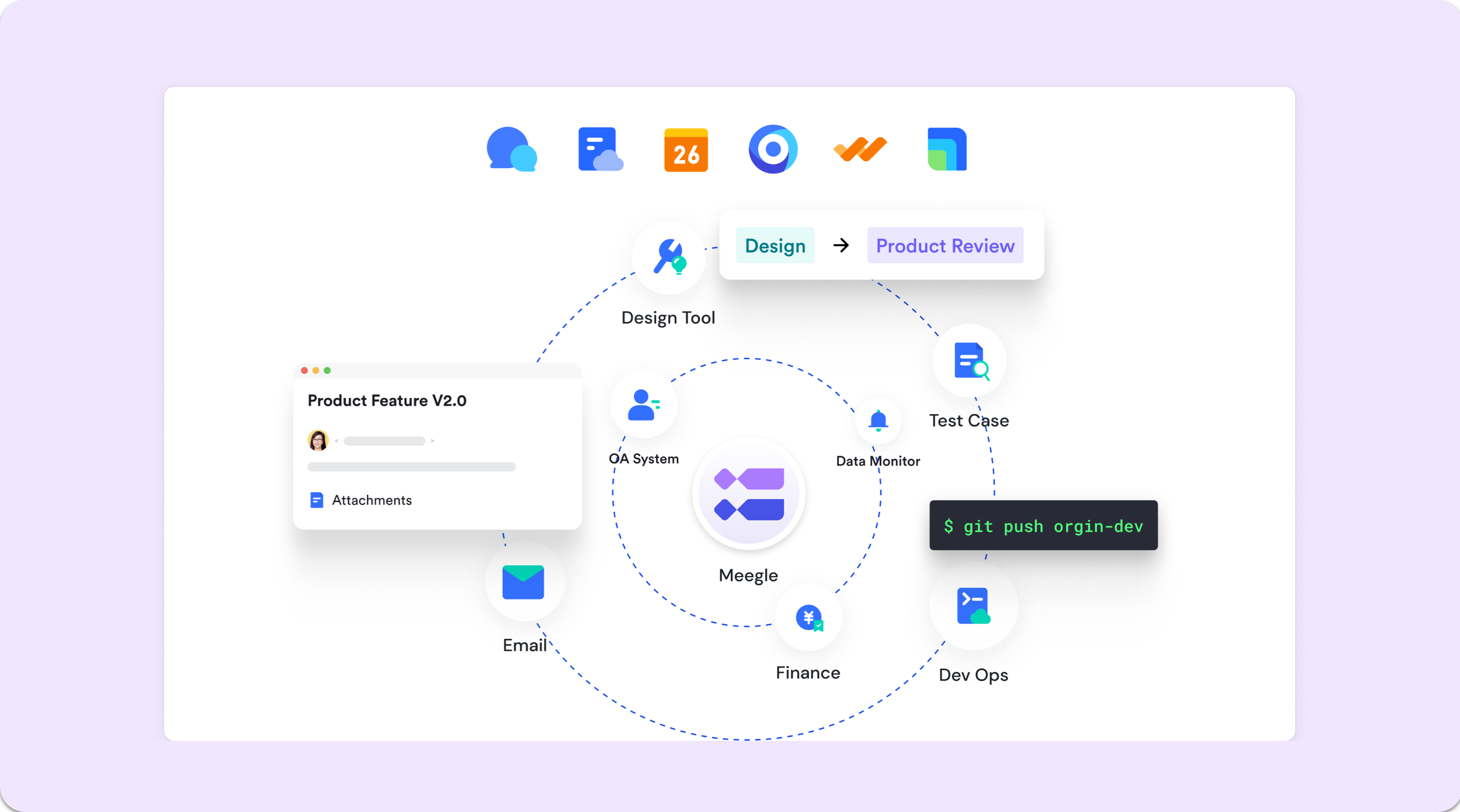
250px|700px|reset
FAQ Sections
- What is a feature management template?
It is a tool used to organize and manage the planning, development, and deployment of software features effectively.
- How does the Meegle template help with feature planning?
The Meegle template provides structured workflows and checklists that streamline the process of defining, prioritizing, and scheduling software features.
- Who can benefit from a feature management template?
Product managers, development teams, and project stakeholders involved in software development can greatly benefit from using a feature management template.
- What features are included in the Meegle feature management template?
It typically includes capabilities for task assignment, priority setting, status tracking, and deadline management.
- How can I track progress using the feature management template?
Progress can be tracked through built-in status updates and milestone markers within the template.
